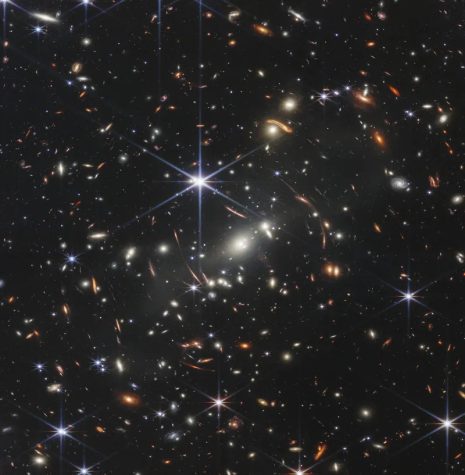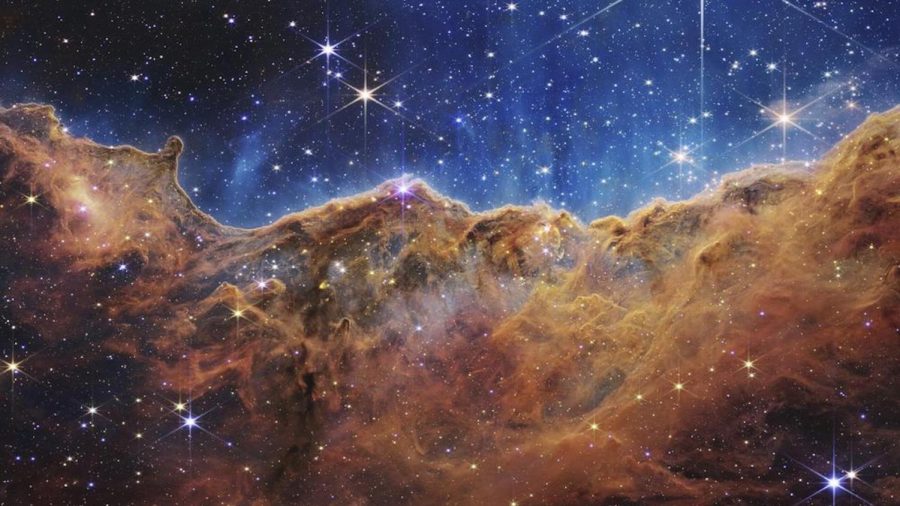James Webb Space Telescope promotes new age of space exploration
Photo Courtesy of NASA
This is the Carina Nebula; a beautiful example of what James Webbs has uncovered. Though previously an invisible region of space to us, we can now see how the Carina Nebula’s peaks reach all the way to 7 lightyears high, with many new stars scattered throughout.
September 19, 2022
NASA’s James Webb Space Telescope is paving the way for a new age of space exploration. NASA recently released the telescope’s first pictures, revealing a stunning display of the universe. These pictures are showing us how the universe formed, as they are from 13.5 billion years ago, 3 billion years after the Big Bang.
The James Webb Space Telescope is an infrared telescope. This means it creates pictures resulting from the ultraviolet and visible light rays that were released by the first stars and planets in the Milky Way Galaxy. As the universe expands, these light rays stretch and are seen now as infrared red waves.
According to a NASA fact sheet about the infrared telescope, “Webb is designed to ‘see’ this infrared light with unprecedented resolution and sensitivity.”
In addition to its detailed pictures, the telescope uses a process called transmission spectroscopy, which can determine the chemical composition of a planet’s atmosphere.
The telescope studies the origins and evolution of the planets and bodies in the solar system and compares them with other exoplanets, planets that orbit other stars.
Professor Christopher Conselice from Manchester University is one of the creators of the telescope. He tells BBC news that this telescope is showing scientists galaxies and stars that they already knew existed but “didn’t understand how and when they formed.”
An example of this is that three-fourths of all the surrounding known galaxies are disk-shaped galaxies and were thought to form much later in the universe’s history. In reality, they formed only a mere 600 million years after the Big Bang.

This cluster of galaxies is called SMACS 0723 and according to BBC journalist, Jonathan Amos, “The cluster itself isn’t actually that far away – “only” about 4.6 billion light-years in the distance. But the great mass of this cluster has bent and magnified the light of objects that are much, much further away.”
“[Since the telescope can determine a planet’s composition, it is] able to detect those things that are important for what we consider to be life, and being able to find those things will help us know where to look,” Susan Macsotai, astronomy and seventh-grade science teacher at WHHS said. “[The telescope gives us direction.”
Macsotai is also the astronomy club adviser and believes the James Webb Space Telescope could mark the beginning of a new age of space exploration. “Especially because we’re moving into that private sector.” SpaceX, a private sector of space exploration created by Elon Musk, is an example of this. The private sector is commercially run space exploration rather than governmentally run.
The James Webb Space Telescope is a huge step in space exploration and learning about both the universe and our own galaxy. It is unknown what astronomists will find in the coming years as it roams further into space.
“I think we are definitely getting into a new age of space exploration,” Macsotai said. “We’ve got better technology, better engineering and more opportunities now.”
Note: Astronomy Club meets in room 2703 and Macsotai is excited to welcome new members.







